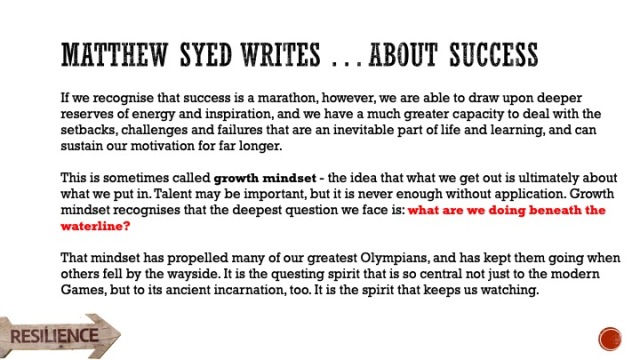
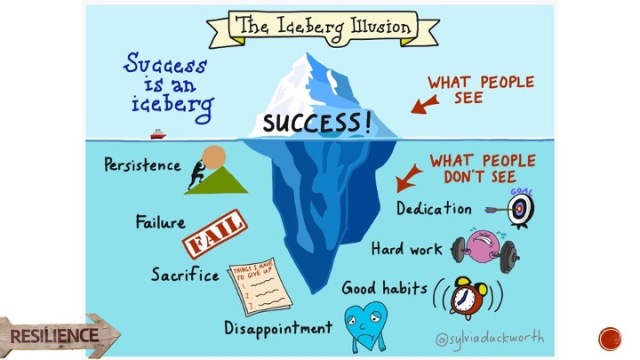
This is sometimes called growth mindset – the idea that what we get out is ultimately about what we put in. Talent may be important, but it is never enough without application. Growth mindset recognises that the deepest question we face is: what are we doing beneath the waterline?
That mindset has propelled many of our greatest Olympians, and has kept them going when others fell by the wayside. It is the questing spirit that is so central not just to the modern Games, but to its ancient incarnation, too. It is the spirit that keeps us watching.”
In the school context we need to be reminded that if our holistic duty of care for the young person also includes their mental well-being – we need to be more proactive in how we support each individual student and give them the keys to living a life filled with more optimism.
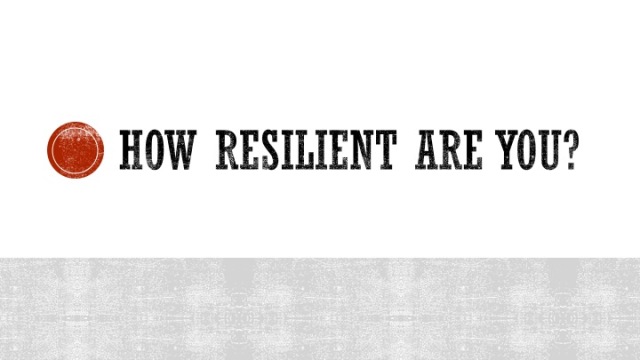
Quiz – How Resilient are you?
In most cases the reality that we will find is that our students are not resilient. They don’t really know what they feel about themselves. They give up easily. They are content with failure and this failure is entirely in line with their fixed mindset and goals.

You can download a copy of this resource here
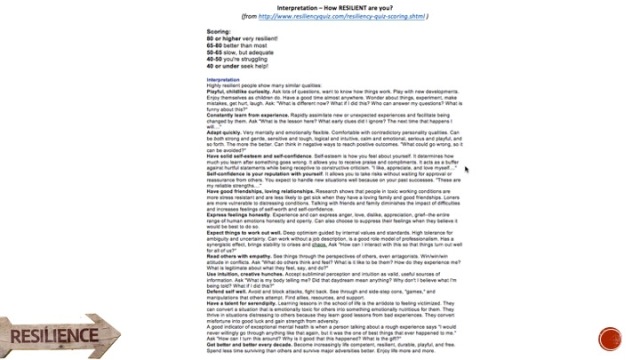

How can we help to build resilience in our students?
Video – How resilience is built
Somehow we have managed to forget the old African truth that “it takes a whole village to raise a child”. In fact, in some cases the child is left to raise themselves.
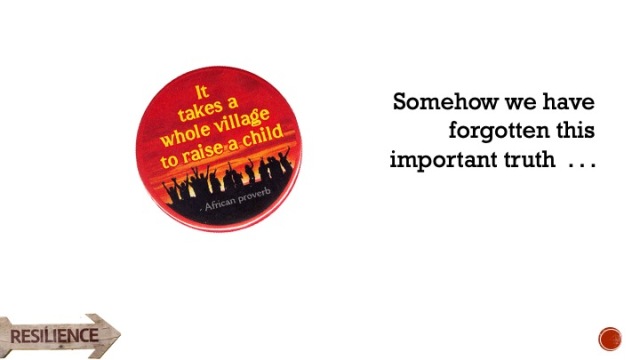
The Resilience Doughnut model is put forward by Lynn Worsley. The Inner ring of the model shows the internal characteristics of an individual showing resilience. These concepts will help to raise self-esteem (I am), self-efficacy (I can) and an awareness of resources (I have).
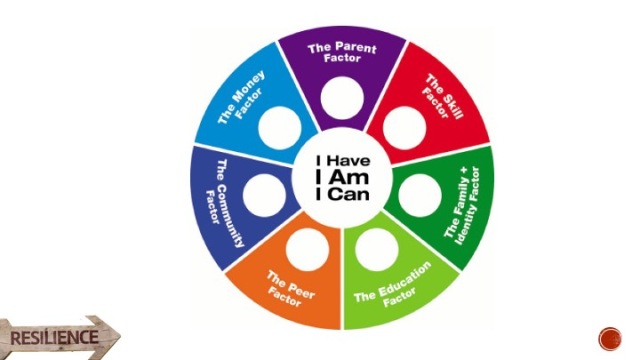
We can use this to help build resilience –
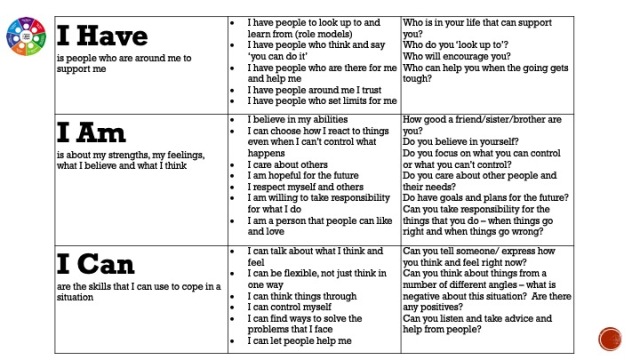
The outer Circle of the model looks at 7 environmental contexts where resilience can be developed. Increasingly – teachers are being asked to cover all of these bases and to be the stabilizing influence and the place where young people learn, practice and model their resilient behaviours.
I want to shout at parents, families and society for the damage they are doing to our young people – but that is not working so instead I need to see how I can change the language and the environment that any young person that I come into contact with.
I see this like some sort of wheel of fortune and that in the life of a young person at any point one of these environments will be the one which is the most dominant or causing the biggest amount of challenge. Do they have the resources to cope? For example, one thing I have noticed in my own school is the number of children who come from one parent families or from homes where there has been a recent and often messy separation. How can we support children like this to cope?
Teachers like to think in blocks of schemes of work. Maybe you are already thinking about how this might fit into your current programme for the year – or maybe you are thinking about a new unit. But this is something that needs to be embedded into you practice. It’s a building block. Its an involuntary process – like breathing. It needs to be a thought process/ an attitude that you are sometimes aware of but most of the time it happens on its own.
This is not something that should be just stuck into the PSHE policy and programme but this is something for your everyday practice.
At this point I really want to advise you to look up some of the work that Ed Sipler has done in this area in Northern Ireland. There are some really great resources here on the CCEA web site (look up Curriculum and SEN and Inclusion –
http://ccea.org.uk/curriculum/sen_inclusion/social_emotional_behavioural_difficulties
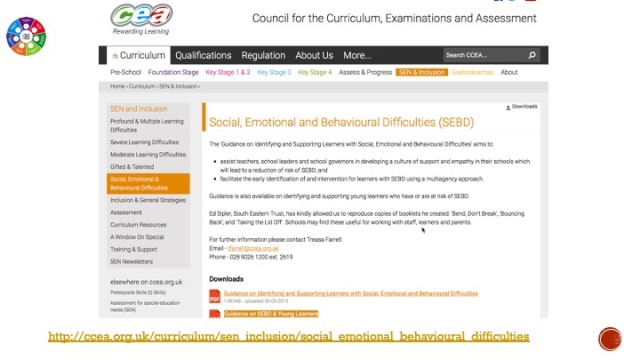
There is one resource in particular called ‘Bend Don’t Break’ that teachers could use and adapt for their own classroom use.
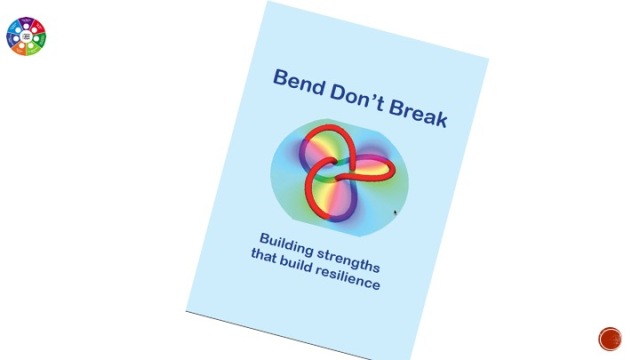
Sipler has a whole section in this resource that takes students through how they can use Thinking to cope with difficult situations. He shows how unhelpful thinking habits can create problems for people but then shows how we can get more control of our thinking. For example he shows some of the types of unhelpful thinking:
- Black and white
- Over generalizing (nothing good ever happens to me)
- Mental filter
- Disqualifying the positive
- Jumping to conclusions
- Making a mountain out of a molehill
- Emotional reasoning (If I make a mistake I must be stupid)
- Should – Must
- Labelling
- This is my fault

We then need to show students how to recognise these thoughts and to ‘Put the brakes on’ through some deep breathing or clenching of the fists to a position where we challenge the thoughts overcoming us and then create an alternative.
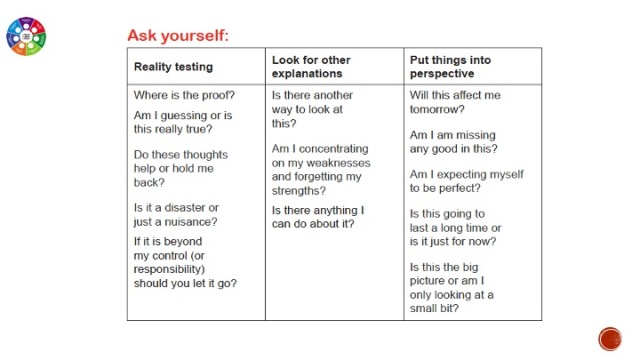
So my question to you is – how can you as a classroom teacher help to develop the resilience of your students?


Pingback: Resilience Part 2 | thinkdotlearn
Pingback: Resilience Part 3 | thinkdotlearn